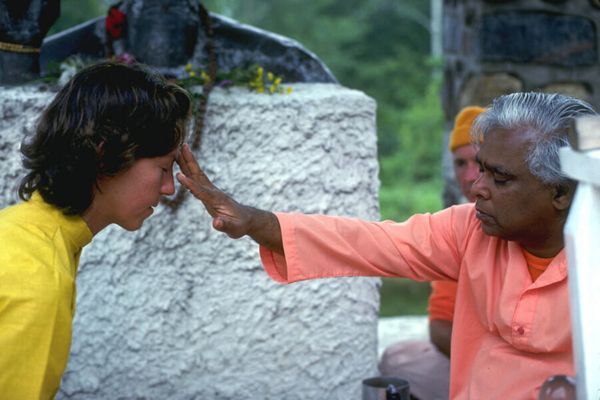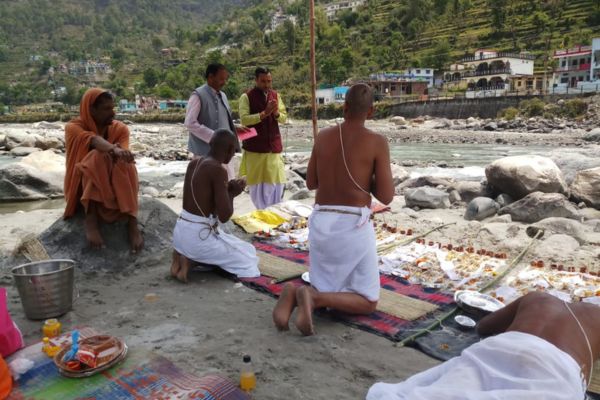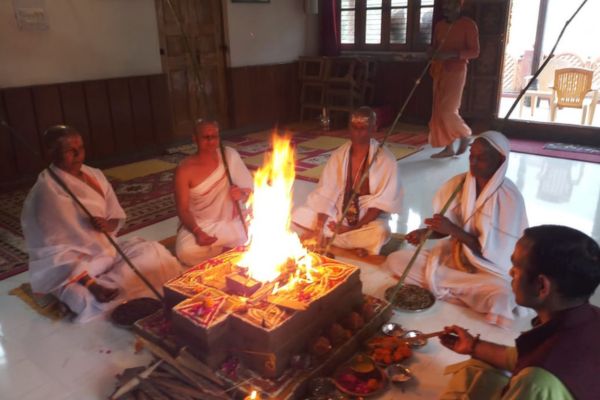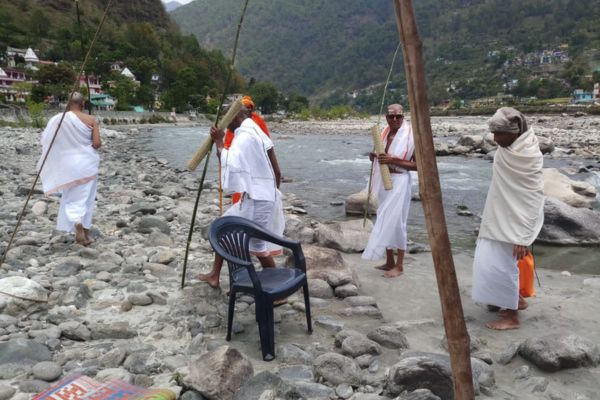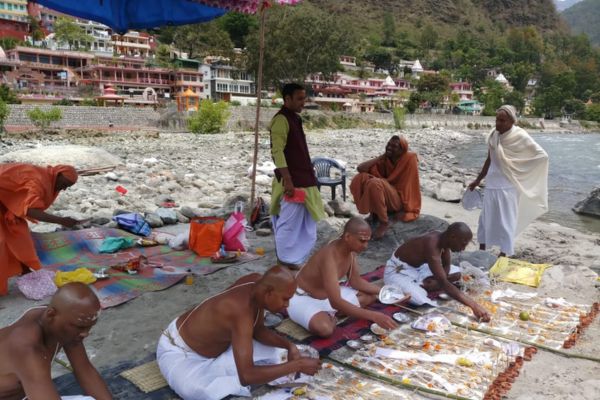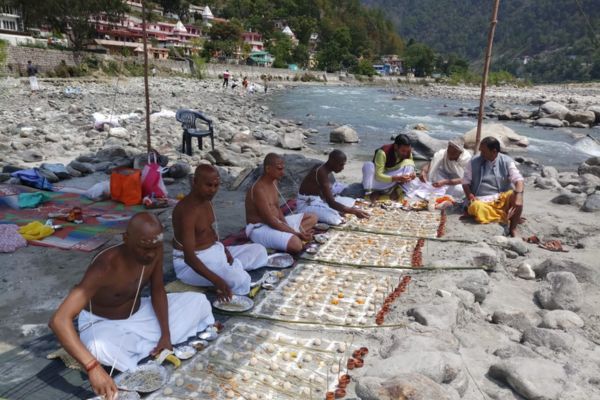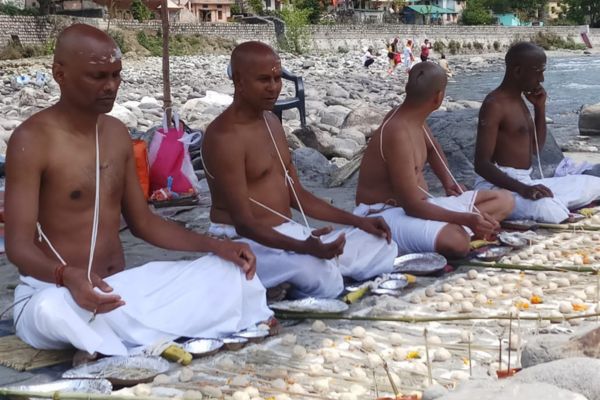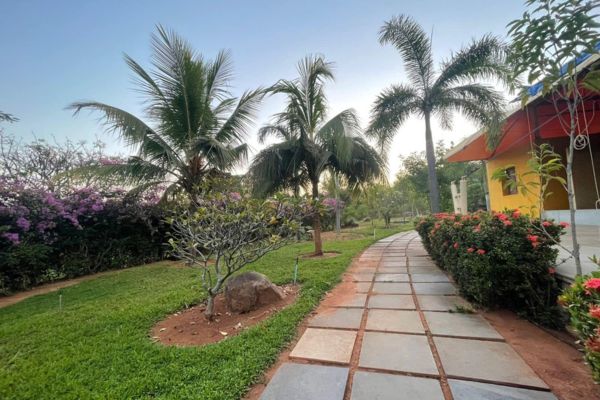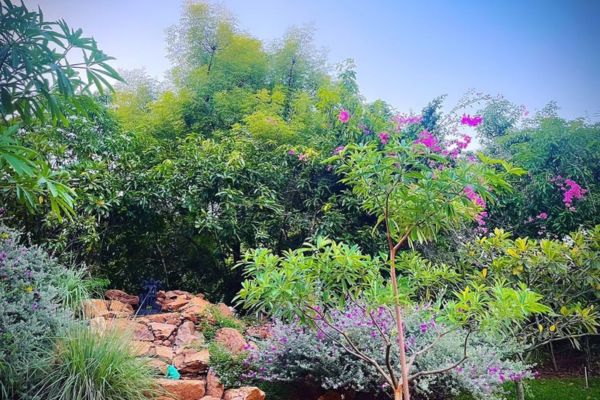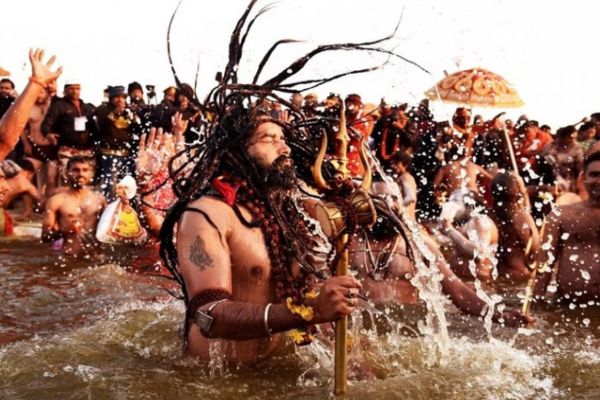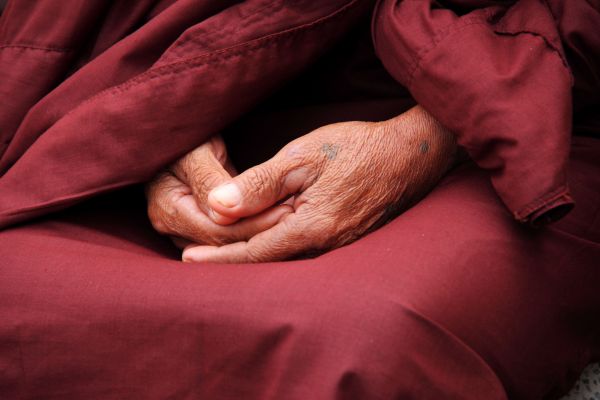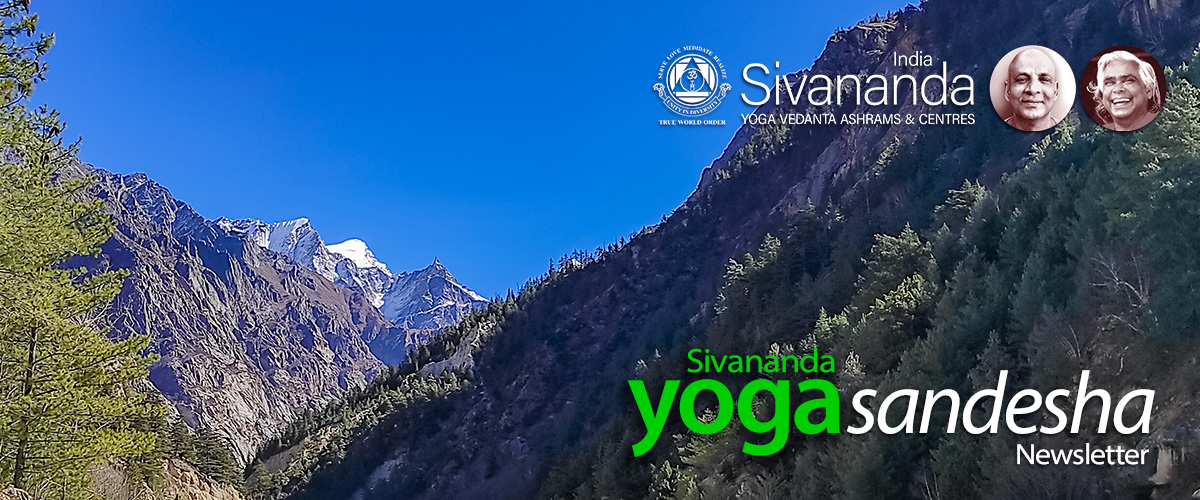
Om Namah Sivaya
Blessed Self,
The world is experiencing much unfortunate conflict right now. In his time, Swami Vishnudevanandaji flew over the Suez Canal and visited Israel and Palestine several times, meeting the leaders there, and advocating for peace. He believed in dialogue and surrendering the ego in times of conflict, and his actions did not always have the desired impact. This did not deter him in his continuous effort to promote peace in the world, irrespective of results. Swamiji always explained that, in any conflict, innocent people will suffer the most. The egos between leaders are always placed above the interests of innocent people, and that in order for peace to prevail, leaders must practice daily meditation and yoga.
In the present geopolitical situation, selfishness predominates, and lives are placed in jeopardy. While citizens do not ask for conflict, their leaders present it as being what people wanted, all for their own personal power and selfish motives. As human beings we must pray for all those suffering. Collective prayers help send peaceful vibrations around the world and help us to stay balanced and reasonable.
War and conflict disturbs our breathing patterns and impacts our brain and mental health. More so than ever, we need daily meditation and yoga practice to survive in these turbulent times. The peace and happiness that we experience with those practices can certainly make an impact within our families, workplaces, and communities. Let’s practice and pray together for these conflicts to end.
The month of November also brings up emotions and a stronger connection to Swamiji, as it was on November 9 that he attained mahasamadhi, and on November 11 that we immersed his body in the Ganges (jalasamadhi) at our ashram in Netala, Himalayas. For many years since then we have conducted a bhandara on November 9, feeding Himalayan sadhus and giving them necessary provisions and other items to help them survive the cold winter.
The bhandara is a charitable act which is well received by the sadhus in the Himalayas and provides them benefit on behalf of our Guru Swami Vishnudevananda. This year the family of one of our Indian Trustees is sponsoring all the bhandara expenses in the memory of Mr. Anjaiah, who left us recently, due to a health issue. Dual Structurals in Chennai, together with their family members and their employees will be present for this event, along with the other Indian Trustees, senior staff, and various well-wishers of the organization.
We are happy to report that we have just started an 18-month-long SIYVAM course with an enthusiastic and serious group of sadhakas who seek to delve deeply into yoga practices and find answers for the questions, “Who Am I?”, and “Where am I going in life?” We wish them every success in their endeavour.
We appreciate your support and blessings for the Sivananda Yoga Sandesha Newsletter which celebrates its first anniversary with this issue. We thank all involved in publishing this beautiful newsletter which keeps us updated with the events and teachings of the organization, for the benefit of our community and the general public.
Over the past year Sivananda Yoga Sandesha has grown to include into four different free offerings, and platforms to share the teachings more widely:
- Sivananda Yoga Sandesha Newsletter, which you have been receiving monthly
sandesha.sivanandayoga.org - Sivananda Daily Quotes, from Master and Swamiji, direct to your mailbox 5 days a week
sandesha.sivanandayoga.org/daily-quotes
And also two other platforms currently under development:
- Sivananda Yoga Sandesha Teachings, a work in progress bringing inspiring teachings in the realized saints’ own words to inspire and motivate
sandesha.sivanandayoga.org/teachings - Sivananda Yoga Sandesha Magazine, a yearly or bi-yearly magazine available in both print and online versions
Please keep your eyes and heart open for these offerings and continue to support Swamiji’s mission. Your support always motivates us to do more for society.
May Master and Swamiji’s blessings be with you all.
Pranams,
Sivananda Yoga Vedanta Ashrams & Centres, India
Photo credit: רם עמיר, bit.ly/3S1o1bs
This month’s theme, brahmacharya, is a special one. One of the yamas (restraints) in Raja Yoga, brahmacharya is often interpreted only as celibacy. The definition is much more nuanced, of course, achara, or conduct that leads to the realisation of Brahman or the self, the absolute, unchanging consciousness. It involves self-restraint, and abstention from indulgence. It is purity in thought, word, and deed. In the tradition it is one of the four ashramas or stages of life. However, for those following a spiritual path it implies renunciation, monkhood, and a way of life within a monastic setting. Brahmacharya is for those who wish to follow a different path, and dedicate their life to their sadhana, study, and contemplation into the self.
A common Vedantic expression ‘the boat should be in the water, but the water should not be in the boat’, refers to aspiring to be in the world but not of it. Two of the traditional ashramas, or stages of life, represent ways of doing this. Brahmacharins and Sannyasins take a formal renunciation and adopt a different appearance and dress in order to remind themselves of their aspiration, and to signal to the world their different focus. In the Indian tradition, renunciates are valued and respected by society, focused on the same goal as others but more intensely and consciously and therefore representing a spiritual ideal.
Brahmacharya definition: Brahmacharya is the first stage in the Ashrama system, typically followed by young individuals. It is often referred to as the student or celibate stage.
Purpose: The primary focus of this stage is on education, self-discipline, and character development. It is a time when individuals are expected to lead a celibate and austere lifestyle, often living with a guru (spiritual teacher) and dedicating themselves to the pursuit of knowledge and personal growth.
Practices: In this stage, individuals are expected to abstain from sensual pleasures, including sexual activity. They lead a simple and disciplined life, often studying sacred texts and engaging in rituals and practices to develop their understanding of spirituality and the self.
Sannyasa definition: Sannyasa is the fourth and final stage in the Ashrama system. It is the stage of renunciation and is often referred to as the ascetic or hermit stage.
Purpose: In this stage, individuals renounce all material possessions and social attachments. The primary focus is on achieving spiritual realisation and liberation (moksha). Sannyasins, or renunciates, dedicate themselves entirely to a life of meditation, contemplation, and self-realisation.
Practices: Sannyasins live a life of complete detachment from worldly matters. They often wear simple saffron robes, have no personal possessions, and live a life of poverty. Their primary practices include meditation, self-inquiry, and devotion to spiritual growth. They may also travel, teach, or engage in acts of service to humanity.
It’s important to note that these stages are traditional concepts within Hinduism, and not all Hindus adhere to them in the modern world. Additionally, there are variations in the way these stages are understood and practiced by different sects and individuals. Some people may choose to remain in the Grihasta (householder) stage throughout their lives, while others may adopt elements of these stages according to their personal beliefs and spiritual journey. May the tradition continue unbroken and may individuals from all walks of life continue to seek the path of brahmacharya and sannyasa to find meaning and to discover the self.
In this, our one year anniversary issue we explore the meaning of brahmacharya and sannyasa; photos of deeksha (renunciation) ceremonies on the banks of the Ganga in the Himalayas; the Classical Foot Hold in hatha yoga practice; Hanuman as the ideal brahmachari; the Kumbh Mela, perhaps the most auspicious occasion on which to renounce; and some tips on maintaining a sattvic lifestyle on the spiritual path. We hope you enjoy the newsletter and find some things to reflect upon.
Thank you for taking the time to read Yoga Sandesha. As usual, please feel free to reach out to us with your thoughts and feedback: [email protected]
Photo Update: Ayurveda at Madurai Ashram
In October we began to offer Ayurvedic programmes and treatments at Madurai Ashram. These are offered through a new Ayurveda facility at the Sivananda Free Rural Medical Hospital within the serene ashram grounds. Yoga Vacationers will now be able to enjoy Ayurvedic treatments during their ashram stay and have further options to pursue Ayurvedic therapies in India. Here are a few photos of our facilities and the ashram grounds.
Research/Links
The following study compares right nostril breathing and left nostril breathing and their immediate effects on the autonomic nervous system of yoga practitioners. Read more here: https://www.ncbi.nlm.nih.gov/pmc/articles/PMC9621351/
Spiritual Calendar
November 9 – Ekadasi
November 9 – Swami Vishnudevananda’s Mahasamadhi
November 11 – Swami Vishnudevananda’s Jalasamadhi
November 12 – Deepavali (Diwali)
November 13 – New Moon
November 23 – Ekadasi
November 27 – Full Moon
Upcoming Courses:
Learn, Practise & Grow with Us!
Teachers’ Training Course (TTC)
- November 12 to December 9,
Neyyar Dam, Kerala - November 19 to December 16,
Madurai, Tamil Nadu - December 17, 2023 to January 13, 2024,
Gudur, Andhra Pradesh - January 7 to February 3, 2024,
Neyyar Dam, Kerala
(English, with translation in Hindi, Malayalam, and Tamil)
For more details, click here
Sadhana Intensive Course (SI)
- January 21 to February 3, 2024,
Gudur, Andhra Pradesh
For more details, click here
Advanced Teachers’ Training Course (ATTC)
- February 11 to March 9, 2024,
Neyyar Dam, Kerala
For more details, click here
Teachings Excerpt:
Hanuman—An Ideal Brahmacharin, by Swami Sivananda
Hanuman was born of Anjana from Pavana, the wind-god. He was named Hanuman after the name of the city Hanuman over which his maternal uncle Parti Surya ruled. Hanuman’s body was as hard as stone. So, Anjana named him Vajranga. He is also known by the name Mahavir or mightiest hero because he exhibited several heroic feats. His other names are Balabhima and Maruti.
The world has not yet seen, and will not see in the future also, a mighty hero like Sri Hanuman. During his lifetime he worked wonders and exhibited superhuman feats of strength and valour. He has left behind him a name which, as long as the world lasts, will continue to wield a mighty influence over the minds of millions of people.
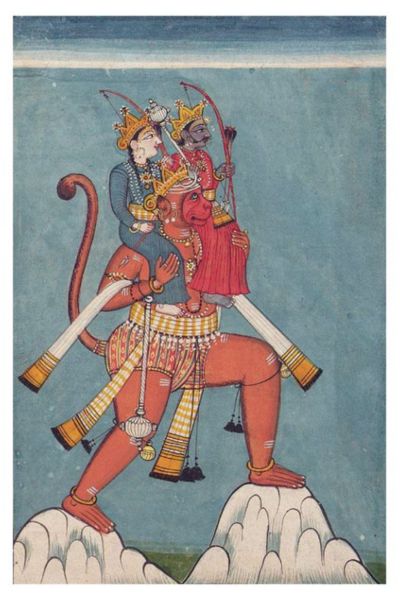
Illustration from Ramayana, 1775
Hanuman is one of the seven Chiranjivis. He is the only learned scholar who knows the nine Vyakaranas or sciences of granunar. He learnt the Sastras from the sun god. He is the personification of Brahmacharya. He is the wisest of the wise, the strongest of the strong and the bravest of the brave. He is the Sakti or energy of Rudra. He who meditates on Hanuman and repeats his name attains power, strength, glory, prosperity, and success in life. Hanuman is worshipped in all parts of India, particularly in Maharashtra.
Hanuman had the power to assume any form he liked, to swell his body to an enormous extent and to reduce it to the length of a thumbnail. His strength was superhuman. He was the terror of the Rakshasas or demons. He was well-versed in the four Vedas and other sacred books. His valour, wisdom, knowledge of the scriptures and superhuman strength attracted everybody who came near him. He had extraordinary skill in warfare.
Hanuman was the chosen messenger, warrior, and servant of Sri Rama. He was a votary and devotee of Lord Rama. Rama was his all-in-all. He lived to serve Rama. He lived in Rama. He lived for Rama. He was a minister and intimate friend of Sugriva.
Hanuman was born on the morning of the 8th of the lunar month, Chaitra, on the most blessed day, Tuesday. From his very birth, Hanuman exhibited extraordinary physical strength and worked many miracles. When he was a child, he jumped up at the sun and caught hold of him to eat. All the gods were very much troubled. They came with folded hands to the child and humbly entreated him to release the sun. The child set free the sun at their request.
A Rishi pronounced a curse on. Hanuman for his wrong action that he would remain unconscious of his great strength and prowess till he met Sri Rama and served Him with devotion. Hanuman saw Sri Rama for the first time in Kishkinda. Sri Rama and Lakshmana came there during the course of their search for Sita whom Ravana had carried away. As soon as Hanuman beheld Sri Rama, he became quite conscious of his own strength and power.
Hanuman burnt the whole of Lanka and brought news of Sita to Rama. In the great war between Rama and Ravana, Hanuman killed many heroes of the Rakshasa army. He did many superhuman acts. Carrying a big mountain and other great activities were nothing for Hanuman. All those were due to the power of Brahmacharya.
When the great war was over, Vibhishana was installed on the throne of Lanka. The timeof ban ishment was over. Sri Rama, Lakshmana, Sita and Hanuman sat on the Pushpaka Vimana or aeroplane and reached Ayodhya in time. The coronation ceremony of Lord Rama was celebrated with great eclat and pomp. Sita presented a necklace of pearls to Hanuman.
Glory to Hanuman, the blessed devotee of Lord Rama. Glory, glory to Sri Anjaneya, the mighty hero, undaunted warrior and learned Brahmachari, the like of whom the world has not yet seen and will not see in all time to come.
Practice and Teaching Tips:
The Classical Foot Hold & Brahmacharya
There are several practices in hatha yoga which help a practitioner keep Brahmacharya. One such practice is the Classical Foot Hold (or sometimes called Classical Hand Hold). Generally, this is used in Paschimottanasana, the Sitting Forward Bend. Holding the big toe with the index finger and thumb, the resulting pressure stimulates the pineal gland and the third eye, regulating the circadian rhythm and helping to transmute sexual energy into spiritual energy.
Let’s explore the significance of the feet and the importance of the Classical Foot Hold!
Event Showcase:
Kumbh Mela—The World’s Largest Gathering
In Sanskrit, “Kumbh” means “Kumbha” or pitcher and ‘Mela’ means fair, deriving its relevance from Sanskrit word ‘pitcher’, the vessel of ‘Amrita’ or the immortal nectar, that appeared during the ‘Samudramanthan’, an event where Gods and the demons had churned the milky ocean to obtain the vessel of nectar. It is a major Hindu event that is known to be the biggest spiritual gathering in the world. Kumbh Mela is held at the riverbank pilgrimage sites of Prayagraj (at the site of sangam of river Yamuna, Ganga and Sarasvati), Haridwar (along river Ganga), Nashik (along river Godavari) and Ujjain (along river Shipra) depending on the planetary alignments. The Mela begins in January (winter solstice) on Makara Sankranti. The festival attracts crowds in millions from across India to have a ritual dip in sacred rivers, nurturing the faith of cleansing themselves of their sins. The fair is also included in the UNESCO Intangible Cultural Heritage of Humanity list.
The biggest attraction of the festival is the dip in the holy river taken by thousands of people. In the midpoint of the confluence of the rivers (Sangam), priests perform prayers and assist the devotees in their bathing ritual in the holy waters of the Sangam. The festival goes on for nearly two months and is held four times every 12 years rotating between the four sites based on planetary positions.
The festival is believed to have been initiated by the Hindu philosopher and saint Adi Shankara to support Hindu gatherings for philosophical purposes.
There is a legend behind the origin of the Kumbh Mela. It’s spiritual relevance goes back to the idea of churning our mind in order to go deep within our consciousness, derive our inherent powers, and a sense of purity to lead a life of liberation or immortality.
Interesting Facts About Kumbh Mela:
- During the ‘Samudramanthan’, the fight between Gods and demons for ‘Amrita’, it is believed that a few nectar drops fell to Earth, making the waters in that land pure.
- It is believed in Hindu mythology that a dip in Sangam, the site of the confluence of holy waters, one attains salvation from the cycle of life and reincarnation.
- Scientifically it’s anticipated that the sites of Kumbh Mela are the energy centers. The scientific reasoning given is that due to the spinning of the Earth, a centrifugal force is created between a latitude of 0 to 33 degrees. This energy purportedly works in vertical manner, where at 11 degrees it is believed to be in a straight form having a positive influence on people. The sites of Kumbh Mela are believed to be where this energy system is working at its best.
- An endearing sight at the Kumbh Mela is that of the sadhus flocking the site in huge groups to have a dip in the holy waters.
- The mention of Kumbh Mela exists in Bhagvat Purana
- Amongst the four cities Prayagraj, Nashik, Haridwar and Ujjain, the Kumbh Mela held in Prayagraj is the oldest of all
- Other than holy bath, there are other activities which take place at the fair such as Pravachan, Kirtan and the distribution of the Maha Prasad
Ayurveda and Nutrition Tips:
Sattvic Living to Support the Yogic Path
The Deeper Purpose of Yogic Path: Most people practice yoga for its physical benefits including weight-loss, health conditions, strength building, flexibility, stress-release, and to attain a state of calm.
While yoga helps us maintain physical health, there is a deeper understanding of Yoga philosophy about living Yoga as a lifestyle that focuses on the importance of attaining and maintaining body-mind purity and balance in all areas of existence including physical, mental, spiritual & psychological levels.
The ancient texts including Yoga Philosophy and Bhagwad Gita focus on aspects of ‘Balance’, ‘Purity’, ‘Calm’ and ‘Light’, in the layered meaning of its sutras. These virtues are a state of conscious energy flowing within us and are the subtle aspects of a yogic lifestyle that each Yogi seeks to attain for a fulfilled life and to become their best version. The art and science of living and walking this path is the attribute of abundant ‘Sattva’ guna that can be attained by modifying our diet, lifestyle, thought patterns, daily routines and practices, following the principles of a sattvic lifestyle. For a Yogi, to attain the best from their Yoga practice, it is important to maintain the virtues of sattva guna. Sattvic living is the path & direction that leads us towards balance & purity and helps us become our best version in all spheres.
What is Sattva Guna?
“tatra sattvaṁ nirmalatvāt prakāśhakam anāmayam sukha-saṅgena badhnāti jñāna-saṅgena chānagha“
– Bhagavad Gita [Chapter 14 verse 6]
Lord Krishna explains to Arjuna, “Sattva guṇa is the mode of goodness, being purer than the others, being illuminating and full of well-being. O sinless one, it binds the soul by creating attachment for a sense of happiness and knowledge.”
In Sanskrit, Sattva Guna means the quality of purity, harmony, and balance. Sattva creates a balance between our overactive and underactive tendencies. According to Ayurveda, Sattva is the force that fuels the virtues of ‘balance’, ‘peace’, ‘purity’, ‘light’ and clarity, which is what a Yogi seeks and attains in a Yoga practice.
How Sattva Guna Relates to Yoga: In a Yoga practice we work towards attaining the oneness of body and mind and reach a state of complete stillness signifying a state of harmony. An over-energetic, overstimulated, or dull mind is a hindrance in reaping the full benefits of a Yoga practice. However, living in a modern world is all about stimulation, activity, and the use of our energy reserves constantly that keep us in a state of sympathetic response or stress (rajas) or dull (tamas) mode most often. A mind with rajasic tendencies lives in a chaotic and confusing state of mind. A mind with tamasic tendencies lives in a dull, inactivity and a state of passive state of mind. Sattva is that positive yet subtle force that balances the impact of rajas and tamas and brings us to a state of complete inner balance.
All yogic practices cultivate sattva that brings stability to a person’s mind and creates vibrations that that allow a person to live peacefully, mindfully and with a purpose. Cultivating a steady, quiet and peaceful mind is the purpose of yoga as well, thus Sattva Guna is the state that each Yogi aims to attain.
How Sattva Guna Impacts Our Body & Mind: Cultivating Sattva Guna positively impacts our physical, mental and spiritual body. It influences our thoughts, actions, choices, perception, habits and everything else about us. The other two counterparts of sattva guna are rajas and tamas, shrink as the sattva guna increases. Rajas causes over-stimulation leading to the overuse of nervous system capabilities and creating imbalance in our physiology and psychology at the level of digestion, elimination, metabolism, circulation, absorption, which becomes the root cause of many health concerns like anxiety, stress, digestive concerns, metabolic concerns and more. Tamas causes under-stimulation leading to the under-use of nervous system capabilities and creating imbalance in our physiology and psychology causing dullness, toxin accumulation, sluggish circulation, sluggish metabolism, low immunity, and other such concerns.
Sattva guna creates balance in our physiology and psychology balancing the root factors that are behind most health concerns body and mind including balancing nervous system functioning. This helps create balance at the hormonal level, digestion, brain functioning, stable moods, proper elimination, active metabolism, happy, cheerful, and joyous persona.
Daily Practices to Cultivate Sattva on a Yogic Path:
- Consume sattvic food comprising of fresh, local and organic produce, whole grains, nuts, seeds, beans, legumes, natural sweeteners like dates and jaggery, spices and herbs.
- Go to bed early and wake up early. Early morning time is called ‘Brahma Muhurta’ (3.30 am-6am) and considered to be the best time to imbibe the sattvic qualities of the nature and nourish mind with positivity, stabilize the mood and help cultivate calmness.
- Maintain daily hygiene by keeping yourself and your surroundings clean. Our surroundings create a similar vibe, therefore staying hygienic, wearing clean clothes, keeping our house clean, deeply impacts the mind energy deeply.
- Create balance in work and leisure activity to balance your rajasic quality (over working) or tamasic (dull) quality with sattva.
- Take care of your senses. A sense of desire is driven from what senses, see, feel, think, hear or smell. Keeping senses under control and exposing them to positivity helps build sattva guna.
- Keep company of positive motivating people. Our company also define our behaviour. A person who uplifts helps you stay in a positive frame of mind helping build sattva.
- Spend time in nature. Lord Krishna mentions in Bhagvad Gita, “vanaṁ tu sāttviko vāso” indicating the positivity that prevails in the forest. It helps elevate a sense of self-consciousness.
- Meditate first thing in the morning cultivating a deep sense of consciousness and detachment with the material world. This helps one become fearless and focused on the karma rather than the fruit of karma. This helps cultivate sattva by clearing the consciousness of worldly affairs.
- Practice asana, pranayama daily to purify body and mind of physical and mental toxins created daily. A purified body enhances the sattva guna.
Book Review:
Sadhana by Swami Sivananda
Swami Sivananda wrote over 200 books in English. In many of the books he is repeating the same messages of Vedanta and spiritual living, however, the various books are each written for different audiences. Some books were written with the average person in mind. Perhaps someone going to the office during the day and returning to their family in the evening, wishing to bring the spiritual into their life. Other books were written with a very specific disciple in mind: one formally following the spiritual path as a renunciate within an ashram setting. Sadhana is one such book. It is reviewed here by one of our staff members in India:
Sadhana, by Swami Sivananda, is a detailed explanation of how to progress on the spiritual path, with do’s and don’ts. The book is must for a spiritual seeker looking for inward progression.
As you dive into the book, it reveals the clarity of someone with a practical experience of Sadhana. A must-read for every serious yoga, spirituality as well as Eastern philosophy student, it is not for those beginning their path of inwardness. It is littered with the beauty of that ancient Indian language – Sanskrit.
Sadhana, the simple literal meaning of the word Sadhana means control, control of what we have in body and mind. The book exhorts us to control in order to live a happy, healthy and peaceful life as well as to finally realise the self. It speaks about the importance of leading a simple disciplined divine life under a competent Guru to develop our maximum potential. I was introduced to this book through the Sadhana Mandalam course, for which it is the course text. I have completed this course twice and it has brought many positive changes in my life for which I shall remain much grateful.
–Krishna Chaitanya, Neyyar Dam Ashram
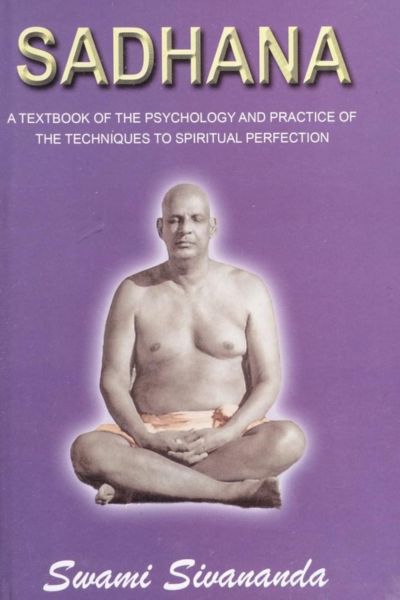
“Even a little self-restraint or a little practice of continence gives inner strength and peace of mind. It invigorates the mind and nerves. It helps to conserve physical and mental energy. It augments memory, will-force and brain-power. It bestows tremendous strength, vigour and vitality.” -Swami Sivananda


